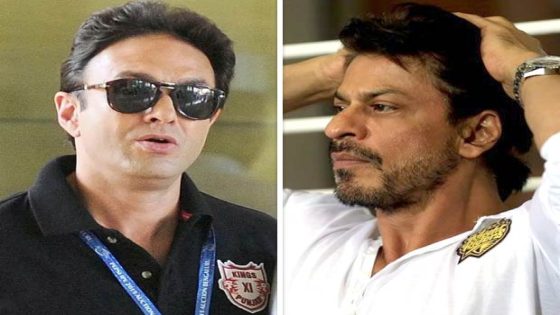Cat Sam De Koning (left) and Saint Max King (middle) are poised to become millionaires.Credit: AFL Photos
Trends are yet to unfold on how list bosses will spend the extra money, but there is a suspicion much of it will be splurged on the game’s elite rather than players considered to be in the middle and lower tiers.
What are the variables in a player’s worth?
The consensus is that the AFL’s best midfielders and key-position players at both ends will cash in, with 63 stars already earning at least $800,000 in 2023, including a record 19 making $1 million-plus, the league revealed last month.
However, there are other factors beyond position at play.
They include draft pedigree, proven performance, a player’s club – stronger teams tend to share the wealth at the top, whereas weaker ones need to splash cash on someone to fill out their cap – rival interest, if there is an interstate pull, age, injury history or durability, and the timing of them coming out of contract.
Most sources accepted a player would score a bigger contract if they switched clubs, particularly via free agency, where suitors are willing to pay more to avoid giving up draft collateral.
Small forwards and dashing half-backs were most likely to fall short of a $1 million-a-year payday, according to industry experts – even one as valuable as Swan Nick Blakey, who inked a seven-year deal until 2031 in June.
Instead, Blakey’s teammates Gulden, Chad Warner and Logan McDonald, particularly given Lance Franklin’s retirement and interest from both West Australian clubs, have a better shot at commanding that figure.
Who else will cash in?
GWS could face another salary cap squeeze, with All-Australian key defender Sam Taylor as good as certain to be paid more than $1 million-a-season when his contract ends next year.
Loading
Fellow Giants and top-five draftees Finn Callaghan (out of contract in 2025) and Aaron Cadman (2026), the No.1 pick in 2022, are also genuine candidates for their next round of negotiations.
Others raised were the Brisbane Lions’ Hugh McCluggage and Harris Andrews, Carlton’s Sam Walsh and Tom De Koning – largely on potential and the likelihood of another bidding war – Docker Andrew Brayshaw, Geelong’s Sam De Koning, Suns Matt Rowell and Jack Lukosius, Hawk Will Day, Melbourne’s Jacob van Rooyen, Tiger Noah Balta and Bulldogs ruckman Tim English.
There was one suggestion that the “Grundy tax” – referencing Brodie Grundy’s monstrous seven-year deal that led to his trade away from Collingwood – could lead to the Dogs’ decision-makers being reluctant to allocate too much to a ruckman, even last year’s All-Australian big man.
However, English’s suitors may not just be from WA, which could force the Western Bulldogs’ hand. His injury history is another potential factor.
Another Cat, Max Holmes, who is out of contract at season’s end, is stationed at half-back in a new role this year, but has played as a midfielder in the past. His speed and ball use have suitors lining up – but if he were to stay with Geelong, a contract that size is unlikely.
The Tasmanian twist
The Tasmania Devils are set to play their first AFL game in 2028, which adds a layer of intrigue to last year’s draft class, which had three Tasmanians selected in the first round.

Kangaroo Colby McKercher, pictured playing for Tasmania, is certain to be in the Devils’ sights.Credit: AFL Photos
That draft was also the first where players picked from one to 20 received three-year standard contracts instead of only two, another change in the CBA.
This means the likes of North Melbourne’s Colby McKercher, Bulldog Ryley Sanders and Giant James Leake – all from Devils territory – are locked to their current clubs until the end of 2026.
They could opt to sign a one-year extension, which they are eligible to do after round six, to heighten their bargaining power and be out of contract in 2027 before Tasmania joins the competition.
Sources told this masthead that all three could have $1 million-plus offers thrust in front of them to become foundation Devils stars. Those offers could even be up to $1.5 million per season across a long period. Tom Scully and Phil Davis played only two seasons with their original clubs before accepting mammoth deals from then-new franchise GWS, while Callan Ward was only four years in when he did the same.
Loading
The only other 2023 draftees rated any chance of landing a million-dollar payday as soon as their second contract were No.1 pick Harley Reid and Gold Coast key forward Jed Walter.
Reid will undoubtedly receive huge offers from Victorian clubs hoping to bring him home, while fellow generational talent Walter already had rival clubs dangling long-term deals for him pre-draft.
CBA changes for top draftees mean they will have to perform exceptionally well by their second season, including playing regularly and receiving awards or, say, All-Australian recognition, to earn between $320,000 and $400,000 by year three.
If not, they may earn less than $200,000 in the third season of their rookie deal. Previously, a top-10 draftee could rocket to $500,000 by then.
Which stars might miss the boat?
Hawthorn target Mitch Lewis (2026) had some votes, too, but others argued he would not garner top dollar, while Bailey Smith’s ACL rupture and off-field issues probably remove him from the picture, the same sources said.
Smith’s only chance would be if he sought a trade at season’s end.

Bailey Smith’s ACL rupture could cruel hopes of him scoring a $1 million-a-year payday.Credit: Getty Images
Lions midfielder Will Ashcroft’s own knee injury may delay his ascension to the millionaire ranks as well, while Brisbane will also have to fork out for first-round picks Cam Rayner (2025) and Zac Bailey (2026).
One agent was especially bullish on what Bailey could be worth, given his game-breaking ability, which sources said was rated higher than run-of-the-mill inside midfielders, who were easier to replace. That said, the best ones, such as Rowell, might buck the trend.
Eagles stars Tim Kelly (2025) and Liam Ryan (2026) are likely to miss out because they will turn, or already be, 30 years old when their agents negotiate their next deal.
It is the same story for Melbourne vice-captain Jack Viney (2025) despite his continued excellent form.
Keep up to date with the best AFL coverage in the country. Sign up for the Real Footy newsletter.
Source Agencies


